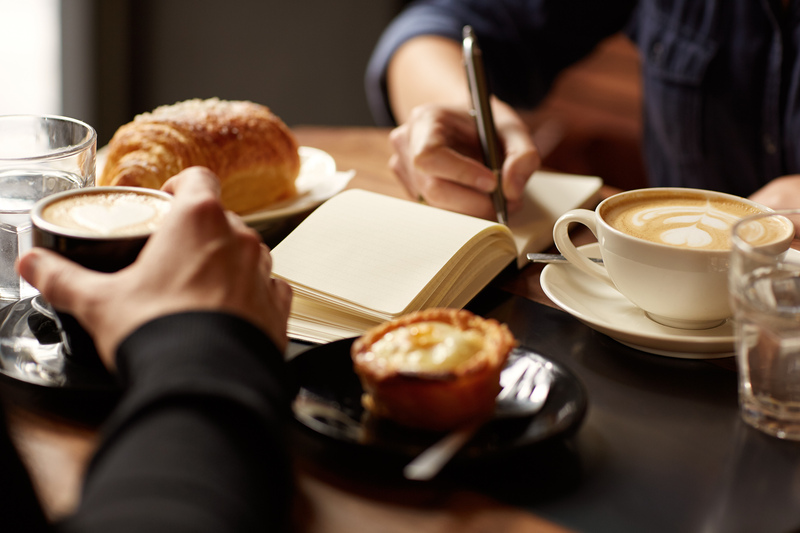Optimizing Your Packing Strategy When Moving House
Posted on 21/06/2025
Optimizing Your Packing Strategy When Moving House
Moving house is both an exciting and challenging experience. Whether you're relocating across the street or to another city, having a solid packing strategy can make the difference between a smooth transition and a stressful ordeal. In this comprehensive guide, we'll explore optimized packing techniques for moving house to help you save time, reduce stress, and keep your belongings safe. Use these proven tips to streamline your move and ensure your valuables arrive at your new home intact.

Understanding the Importance of an Efficient Packing Approach for Moving House
Did you know that many move-related damages and delays are often due to poor planning and a weak packing method? An optimized house packing strategy isn't just about stuffing items into boxes. It's about:
- Organizing your possessions for quick and easy unpacking
- Protecting valuables and fragile items from potential damage
- Labeling and inventorying so you don't lose track of your stuff
- Maximizing the space available in moving boxes and vehicles
- Reducing the workload and minimizing last-minute surprises
Effective home move packing methods can save you time, money, and energy--helping make the transition to your new home as seamless as possible.
Pre-Packing Preparation: Laying the Foundation
1. Create a Moving Inventory
Before you begin packing for your move, make a detailed inventory of your possessions. This helps you track items throughout the process and ensures nothing is lost or forgotten. Create a spreadsheet or use moving apps to categorize belongings by room, value, or use frequency.
2. Declutter and Sort Before Packing
Moving is the perfect opportunity to declutter your home. Go room by room and decide what to keep, donate, sell, or throw away. Not only will this lighten your load, but you'll also save on packing materials and moving costs.
- Sell unused electronics, furniture, or clothing online
- Donate items in good condition to charity
- Recycle or discard broken or worn-out items
3. Gather Quality Packing Supplies
An optimized packing strategy for moving requires the right materials. Gather sturdy boxes in various sizes, packing tape, permanent markers, bubble wrap, packing paper, and specialty boxes (like wardrobe or dish boxes). Having quality supplies protects your items and keeps the packing process organized.
4. Develop a Packing Timeline
Don't leave all your packing for the final days before your move! Create a timeline that breaks the task into manageable chunks:
- 4 weeks out: Pack up out-of-season items, rarely used rooms, and storage areas.
- 3 weeks out: Sort and pack decorative items, books, and fine china.
- 2 weeks out: Whittle down kitchen gadgets, linens, and hobby supplies.
- 1 week out: Pack daily essentials in "open-first" boxes for quick access at your new home.
Keep your schedule realistic and flexible for any unexpected changes.
Expert Packing Techniques for Maximum Efficiency and Safety
1. Pack Room by Room
One of the most effective packing methods for moving house is to focus on one room at a time. Finish packing an entire room before moving to the next. This keeps belongings organized and simplifies both the packing and unpacking process.
2. Use The Right Box For The Right Item
Box selection can make a significant impact on how safely and efficiently you move:
- Small boxes: Best for books, canned goods, and other heavy items
- Medium boxes: Great for electronics, toys, and kitchen tools
- Large boxes: Ideal for linens, clothing, and lightweight objects
- Specialty boxes: Use wardrobe boxes for hanging clothes, dish packs for glassware, and TV boxes for flat screens
3. Heavier Items on the Bottom, Lighter on Top
When loading boxes or stacking them in the moving truck, always put heavy items at the bottom and lighter things on top. This provides stability, prevents crushing, and makes lifting easier.
4. Fill Gaps to Prevent Shifting
Don't leave empty spaces in boxes. Use towels, clothes, or packing paper to fill in gaps. Not only does this protect belongings, but it also prevents shifting during transport--a common cause of damage.
5. Wrap Fragile Items Carefully
Wrap dishes, glassware, and delicate decorations individually with bubble wrap or packing paper. For added safety, use double layers and mark these boxes as FRAGILE on all sides.
6. Seal Boxes Securely
Use high-quality packing tape to seal boxes at the seams and edges. Reinforce the bottom of each box to prevent breakage when lifting or carrying.
7. Label Everything Clearly
Label each box with:
- The room it belongs to (e.g., "Kitchen" or "Master Bedroom")
- A brief list of the contents (e.g., "Pots & Pans, Mixing Bowls")
- Special handling instructions (e.g., "Fragile" or "This Side Up")
A well-labeled box helps both you and the movers place it in the correct room, making the unpacking process much faster and more organized.
Packing Tips by Room: An Optimized Approach for Moving Homes
Kitchen
- Bundle utensils in sets and wrap sharp objects for safety.
- Keep plates vertical in boxes, cushioned between layers of packing paper.
- Seal opened condiments and food containers tightly using plastic wrap before packing.
- Use dish packs for glassware, cups, and mugs, with plenty of padding.
Living Room
- Take photos of electronics and entertainment setups for easy reassembly.
- Coil and label cables and accessories separately.
- Wrap artwork, mirrors, and TVs with special covers or bubble wrap.
- Dismantle furniture when possible and keep screws/bolts in labeled bags.
Bedrooms
- Use wardrobe boxes for hanging clothes to avoid wrinkles.
- Pack bedding and pillows in large, breathable bags or boxes.
- Label everything by family member for easy distribution at your new place.
Bathroom
- Seal toiletries in plastic bags to prevent leaks and spills.
- Dispose of expired or almost-empty products before moving.
- Pack towels, bath mats, and shower curtains together by bathroom.
Garage & Shed
- Safely dispose of or move hazardous items (like paint or chemicals) as per regulations.
- Bundle and pack tools using protective covers or cases.
- Label boxes of spare car parts or seasonal gear clearly for storage.
Special Considerations for an Optimized House Packing Plan
1. Packing Valuable & Sentimental Items
Set aside jewelry, family heirlooms, passports, and important documents in a small, secure box. Move these items with you personally, rather than on the moving truck.
2. Creating an Essentials Kit
Prepare a separate "first night box" with all the essentials you'll need upon arrival at your new home, such as:
- Toiletries and medications
- Basic kitchen supplies (dishes, silverware, coffee maker)
- Chargers and basic electronics
- Clean clothes and towels
- Bedding and pillows
- Snacks and bottled water
This box should be loaded last so it's easily accessible when you arrive.
3. Climate Considerations
If moving during extreme weather, take steps to protect items sensitive to heat, cold, or moisture. Electronics, artwork, and perishable goods should be packed securely and kept away from vulnerable vehicle areas.
4. Insurance and Security
Check your moving company's insurance policies and consider extra coverage for valuable items. Photograph high-value possessions for records, in the unlikely event you need to file a claim.
Optimizing Your Packing on Moving Day
Packing the Moving Truck Efficiently
- Load heavy furniture and appliances first--securely and upright against the back wall of the vehicle
- Stack boxes by size, keeping heavier boxes at the bottom and lighter ones above
- Fill in gaps with soft items, like pillows and blankets, for added cushioning
- Keep valuables and essentials in a separate section for quick access
Communicate with Movers
If hiring professional movers, walk them through your labeling system and special instructions. Guide them to fragile boxes and items that need careful handling or priority placement.
Final Walkthrough
Before leaving your old house, do a final check on all rooms, closets, attics, basements, and storage nooks. Ensure nothing is missed and that all windows and doors are secure.

Frequently Asked Questions: Packing Strategies When Moving House
How far in advance should I start packing for my move?
The best approach is to start 4-6 weeks before your moving day. Begin with items you won't need, gradually working your way towards daily essentials as moving day approaches.
How can I make unpacking easier at my new house?
Unpacking is much less stressful if you pack with unpacking in mind. Label boxes by room and contents, keep like items together, and create an essentials box for the first 24-48 hours at your new home.
Is it worth hiring professional packers?
If your budget allows and you're short on time, professional packing services provide expertise, quality materials, and insurance coverage for your belongings. They can significantly reduce the stress of moving house and help ensure a smooth transition.
What should I avoid when packing for a move?
- Don't overfill boxes--they may burst or be too heavy to move safely
- Avoid packing hazardous materials--these are often not covered by moving companies
- Never leave packing to the last minute, as rushed packing increases the risk of breakage
- Avoid mixing items from different rooms as this makes unpacking confusing
Conclusion: Make Your Move Simpler with a Smart Packing Strategy
Whether you're moving for the first time or you're a seasoned mover, optimizing your house packing strategy will help you transition into your new home with ease. Remember to plan ahead, gather the right materials, declutter, and pack methodically. Organized box labeling, careful wrapping, and clear communication are integral to making moving day as smooth as possible.
Use this checklist and the practical tips outlined above to keep your next move stress-free, efficient, and organized. Happy moving!



